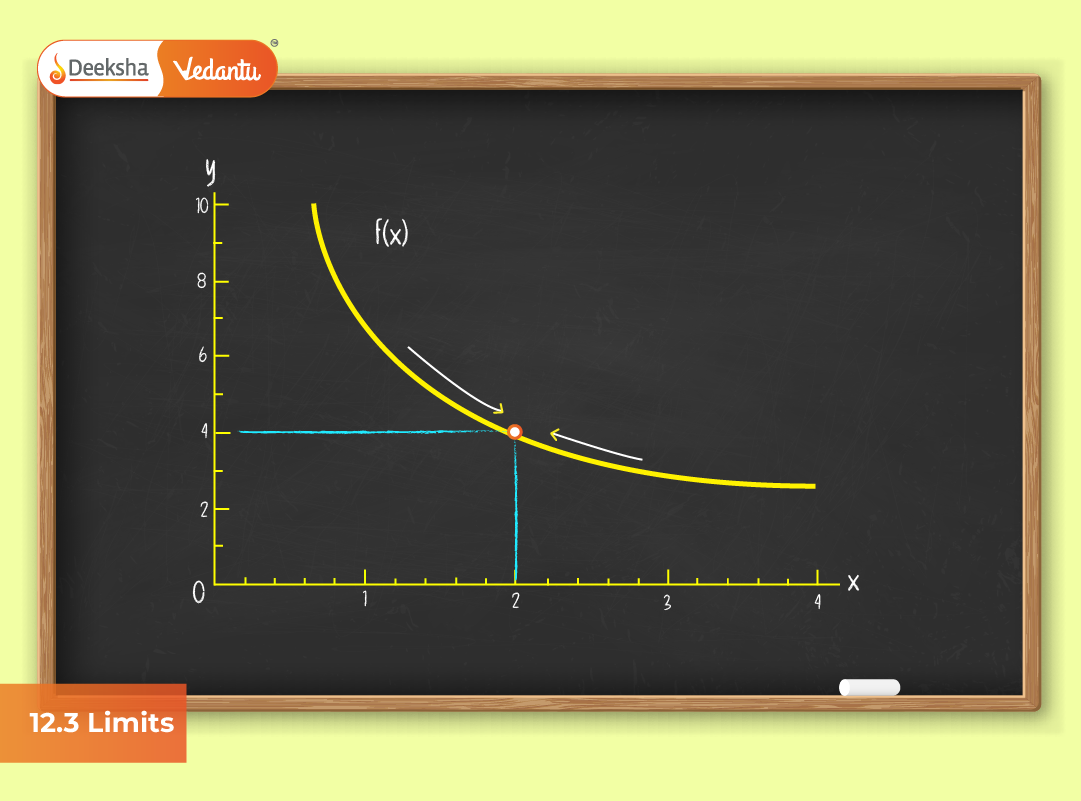
Limits are one of the most fundamental ideas in calculus. They allow us to describe how a function behaves as its input approaches a certain value. This idea serves as the basis for defining derivatives and integrals, which are key to understanding change and accumulation — concepts heavily tested in JEE Main and JEE Advanced.
For students in Class 11, understanding limits is not only important for exams but also for building a strong conceptual foundation for all future calculus topics. The deeper you understand limits, the easier it becomes to tackle complex derivative problems and integration later.
Marks Weightage in JEE
In the JEE Main exam, Limits and Derivatives together account for approximately 7–8 marks. Out of this, the concept of limits itself carries around 2–3 marks. You can expect:
- Direct formula-based questions like evaluating standard trigonometric limits.
- Conceptual questions that test Left-Hand Limit (LHL) and Right-Hand Limit (RHL).
- Algebraic manipulation problems involving rationalization, factorization, or indeterminate forms.
In JEE Advanced, you might also find conceptual applications of limits in topics like continuity, differentiability, and series expansion.
Subtopics Covered in Limits
- Introduction to Limits – Understanding the idea of approaching a value.
- Existence of a Limit – Concept of Left-Hand and Right-Hand Limits.
- Algebra of Limits – Rules that govern addition, subtraction, multiplication, and division of limits.
- Limits of Polynomials and Rational Functions – Using substitution and algebraic manipulation.
- Evaluation Techniques – Direct substitution, rationalization, and standard limits.
- Standard Limit Formulas – Key results that simplify trigonometric and exponential limits.
- JEE-Oriented Examples – Questions that strengthen exam readiness.
Introduction to Limits
When we say that x approaches a value ‘a’, it doesn’t mean x equals a. Instead, it means we’re observing what happens to f(x) as x gets very close to a from either side. The function’s output f(x) approaches a certain value — that’s called the limit.
Example:
If f(x) = 2x + 3, then lim(x→2) f(x) = 7.
Here, even if x = 2 is not substituted directly, as x moves closer to 2, f(x) moves closer to 7.
Graphically, if you plot f(x), you’ll notice that as x approaches 2, the y-values of the graph approach 7 smoothly. This visualization helps in understanding the idea of continuity and approaching values.
Existence of Limit
For a function’s limit to exist at a point, both the Left-Hand Limit (LHL) and the Right-Hand Limit (RHL) must be equal.
If:
- LHL = lim(x→a⁻) f(x)
- RHL = lim(x→a⁺) f(x)
Then, lim(x→a) f(x) exists only when LHL = RHL.
Example:
Let f(x) = |x|.
- As x approaches 0 from the left, f(x) = −x = 0
- As x approaches 0 from the right, f(x) = x = 0
Hence, both LHL and RHL are equal, and lim(x→0) |x| = 0.
This equality is what guarantees smoothness or continuity at that point.
Algebra of Limits
Algebraic properties make solving limit problems simpler and more logical. These rules are used when the limits of individual functions exist.
If lim(x→a) f(x) = L and lim(x→a) g(x) = M, then:
- lim(x→a) [f(x) + g(x)] = L + M
- lim(x→a) [f(x) – g(x)] = L – M
- lim(x→a) [f(x) × g(x)] = L × M
- lim(x→a) [f(x)/g(x)] = L/M, provided M ≠ 0
- lim(x→a) [k × f(x)] = kL, where k is a constant.
These properties allow us to break complex functions into manageable parts, simplifying the overall computation.
Limits of Polynomials and Rational Functions
For any polynomial function p(x), the limit as x approaches a is straightforward. You can directly substitute x = a, since polynomial functions are continuous everywhere.
lim(x→a) p(x) = p(a)
Example:
lim(x→3) (x² + 2x + 1) = 3² + 2(3) + 1 = 16.
For rational functions (fractions of polynomials), the process is similar, except you must check if the denominator becomes zero.
lim(x→a) p(x)/q(x) = p(a)/q(a), provided q(a) ≠ 0.
When q(a) = 0, we encounter indeterminate forms like 0/0. In that case, factorization or rationalization is needed.
Example:
lim(x→2) (x² – 4)/(x – 2)
= lim(x→2) (x – 2)(x + 2)/(x – 2)
Cancel the common term (x – 2): Limit = 4.
This demonstrates how algebraic simplification removes the indeterminate form.
Evaluating Limits – Techniques
1. Direct Substitution Method
When a function is continuous, you can directly replace x with the value of a to find the limit. This is the simplest technique and works well for polynomial and rational functions where no indeterminate form arises. For example, if f(x) = 2x + 5, then lim(x→3) f(x) = 11 simply by substituting x = 3. It helps build intuition that continuous functions can be directly evaluated without any transformation.
2. Factorization Method
Used when substitution leads to 0/0. Factorize the expression and cancel common terms before applying the limit. This is common for quadratic or cubic expressions. For instance, lim(x→2) (x² − 4)/(x − 2) becomes (x + 2) after canceling the common term (x − 2), giving a limit of 4. Understanding algebraic identities such as (a² − b²) = (a − b)(a + b) is essential for this method.
3. Rationalization Method
When square roots or radicals are present, multiply by the conjugate to simplify the expression. For example, lim(x→0) (√(1 + x) − 1)/x can be solved by multiplying numerator and denominator by (√(1 + x) + 1), giving (1 + x − 1)/(x(√(1 + x) + 1)) = 1/(√(1 + x) + 1), and the limit equals 1/2. This method is frequently used for algebraic surd expressions in JEE problems.
4. Using Standard Limits
Use known results for trigonometric, exponential, or logarithmic limits. For instance, the standard limits lim(x→0) (sin x / x) = 1 and lim(x→0) ((1 + x)¹/ˣ) = e are foundational results. These allow for solving more complex problems involving small-angle approximations or growth functions. Recognizing patterns that fit these standard forms saves significant time during exams.
5. L’Hôpital’s Rule (Advanced)
For forms like 0/0 or ∞/∞, differentiate the numerator and denominator separately to find the limit. This rule is extremely powerful for complex functions that cannot be simplified algebraically. For example, lim(x→0) (sin x − x)/x³ can be evaluated by differentiating repeatedly until a determinate value is obtained. Students should, however, use this rule carefully and only after confirming that the function is differentiable around that point.
Each method plays a role in different types of problems, so JEE aspirants should practice identifying which technique suits which question type. Understanding not only how but why each technique works deepens conceptual clarity and helps handle advanced calculus problems confidently.
Standard Limit Formulas
- lim(x→0) (sin x / x) = 1
- lim(x→0) (tan x / x) = 1
- lim(x→0) ((1 + x)¹/ˣ) = e
- lim(x→0) ((aˣ – 1)/x) = logₑ a
- lim(x→0) ((eˣ – 1)/x) = 1
These standard results are extremely powerful. Once memorized, they save time in the exam and help in solving otherwise lengthy questions within seconds.
JEE-Based Examples
Example 1
Find lim(x→1) (x³ – 1)/(x – 1)
Solution:
(x³ – 1) = (x – 1)(x² + x + 1)
So, limit = (x² + x + 1) = 3 when x = 1.
Example 2
Evaluate lim(x→0) (sin 5x / x)
Using standard limit: lim(x→0) (sin x / x) = 1
Multiply inside by 5 ⇒ Limit = 5.
Example 3
Find lim(x→0) (1 – cos x)/x²
Multiply numerator and denominator by (1 + cos x):
(1 – cos x)(1 + cos x)/x²(1 + cos x) = sin²x/x²(1 + cos x)
As x→0, sin x / x = 1 and cos x = 1 ⇒ Limit = 1/2.
Example 4
Find lim(x→π/2) (tan x)
As x approaches π/2, tan x → ∞. Thus, the limit does not exist — it diverges to infinity.
Example 5
Find lim(x→0) ((eˣ – 1 – x)/x²)
This limit equals 1/2, which comes from the series expansion of eˣ. Such questions appear in JEE Advanced to test your understanding of higher-order limits.
Common Mistakes Students Make
- Ignoring the presence of indeterminate forms like 0/0 or ∞/∞.
- Assuming a function’s value equals its limit — not always true.
- Forgetting to compare LHL and RHL in discontinuous functions.
- Mixing up trigonometric identities while simplifying.
- Neglecting the importance of standard limits and series expansion.
Avoiding these errors ensures better accuracy and confidence in exams.
Additional Tips for JEE Aspirants
- Practice problems from past year papers; JEE often repeats concepts in new forms.
- Visualize limits graphically to strengthen conceptual understanding.
- Combine limits with continuity and derivatives for advanced preparation.
- Pay attention to units and symbols, especially in trigonometric limits.
- Develop speed and precision through repeated practice.
FAQs
Q1. What is the difference between Left-Hand and Right-Hand Limit?
The Left-Hand Limit (LHL) is the value approached by the function as x approaches from the left of a point, while the Right-Hand Limit (RHL) is from the right. A limit exists only if both are equal.
Q2. Can limits be negative?
Yes. Limits represent the value a function approaches, not the direction — so they can be positive, negative, zero, or even infinite.
Q3. Why do we need limits in calculus?
Limits help define derivatives (instantaneous rate of change) and integrals (area under a curve). They connect algebra with continuous change.
Q4. Are all functions continuous if their limits exist?
No. A function’s limit can exist at a point where the function itself is undefined. For continuity, both the limit and function value must exist and be equal.
Q5. How many questions on limits appear in JEE Main?
Usually 1–2 questions appear each year, often testing algebraic manipulation or trigonometric standard limits.
Q6. How can I get faster at solving limit problems?
Develop speed through pattern recognition. Practice identifying the type of limit — polynomial, trigonometric, or rational — and apply the right technique immediately.
Conclusion
The study of limits is like learning the language of calculus. Once you master how functions behave near specific points, the concepts of derivatives and integrals become intuitive. For JEE aspirants, consistent practice on standard limits, algebraic manipulation, and graphical interpretation will make this chapter an easy score booster. Combine conceptual understanding with regular practice, and you’ll be ready to solve any limit-based question confidently.






Get Social